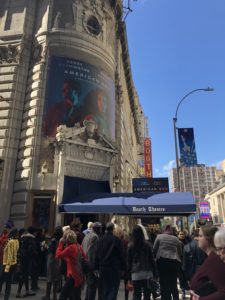Readings
• Kimberly Springer, Chs. 1, 2, 4, Living for the revolution: Black feminist organizations, 1968-1980
• Ntozake Shange, A Daughter’s Geography
After discussing how Black women created their own organizations after finding their needs often sidelined in both white feminist and masculinist Black civil rights movements, Springer engages with fissures within Black feminist movements that mirrored the fault lines of power in society at large. At first glance, Black feminism suggests a reprieve from monolithic and hierarchical social organizing. Because “Black feminists’ voices and visions fell between the cracks of the civil rights and women’s movements,” Springer argues that they “conducted their ‘politics in the cracks’” (Springer, 1). These “cracks,” negative spaces breaking away from the establishment, offer a space to experiment with radical agendas and bottom-up change, to chip away at the foundations of the dominant political structure.
On closer examination, however, these “cracks” are not void of power relations, but are themselves constituted by power relations that need to be grappled with. “Though united through a collective racial and gender identity,” Springer reveals that Black feminists “discovered cleavages based on” various additional intersections,[1] such as “class and sexual orientation” (Springer, 63). The idea of a perfectly united struggle against hegemony is itself problematically monolithic.
Audre Lorde, for instance, struggled not only against racism and sexism but also against homophobia, ableism, and U.S. chauvinism. In the Cancer Journals, Lorde reflected that “I am defined as other in every group I’m part of” (Lorde, 18). Notably, this dilemma did not lead her to give up advocating for each group’s political rights. Rather, Lorde is famous for her intersectional methodology of using difference as a source of power and community, rather than a cause for constructing adversarial hierarchies and mutually exclusive competition.
Springer’s “cracks,” then, do not only refer to destruction of hegemony but to the generative use of difference as a basis for political solidarity, instead of insisting on identity as a prerequisite for empathy and shared interests. Here, I use the term “identity” according to its original meaning — the property of being identical. White rich women, for instance, claimed access to “equal” rights in the 1848 Declaration of Sentiments on the basis of their “identity” with white rich men. To these white feminists, equal rights meant rights identical to those of white rich men — meaning, an equal right to own enslaved people; an equal right to exploit the working class by owning businesses; an equal right to hire unpaid or underpaid surrogates for child care and domestic work. Far from challenging white rich men to end colonial capitalist violence, the 1848 Declaration epitomizes the ways in which white rich women’s challenge to power constituted of them jostling with white men for front and center seats in perpetrating colonial capitalist violence — especially against working women and women of color — and reaping the profits, “equally.”
The “cracks” represent a Black feminist refusal to seek “identity” with power. These “cracks” do not build on the foundation of power to include more groups, such as white women and the Irish and the middle class, but work to tear down the foundation of power altogether, and offer a more radical and syncretic way of life in its place. “The heterogeneity of black feminists’ individual political perspectives would yield dissention,” Springer reflects, “but that dissention would in turn expand the boundaries of black feminist politics and the base of the black feminist movement” (Springer, 64). Like roots splitting apart pavement, this rhizomatic disruption of monolithic hegemony creates what Black Lives Matter cofounder Alicia Garza has described as “an effervescence – so, a bubble up, rather than a trickle down.”[2]
These cracks that create more cracks abound in Ntozake Shange’s poetry. The diasporic geography of Shange’s Bocas: A Daughter’s Geography mirrors the dissension that expands the base of intersectional and transnational political solidarity:
i have a daughter/ la habana
i have a son/ guyana
our twins
Shange weaponizes the same slashes used in formal grammar to separate lines of poetry in order to unite people across difference, be it gender or oceans. Like Springer’s “cracks,” Shange’s slashes are a breaking that expands the boundaries of how we see ourselves and our opportunities for collaboration in the freedom struggle. Through her poetic mutilation of the colonizer’s language, Shange demonstrates the need to shatter the power structure and its standardizing mission in order to create a radical future.
[1] The term “intersectionality” was popularized by Kimberlé Crenshaw, a Black woman and legal scholar who is not credited often enough for her contribution. She uses the term not simply for people who stand at a crossroads of “identity,” but for people who find themselves targeted by multiple interacting systems of oppression at once.
[2] Great analysis of that TED talk here. Excerpted from Deva Woodly’s upcoming book, Black Lives Matter and the Democratic Necessity of Social Movements.


